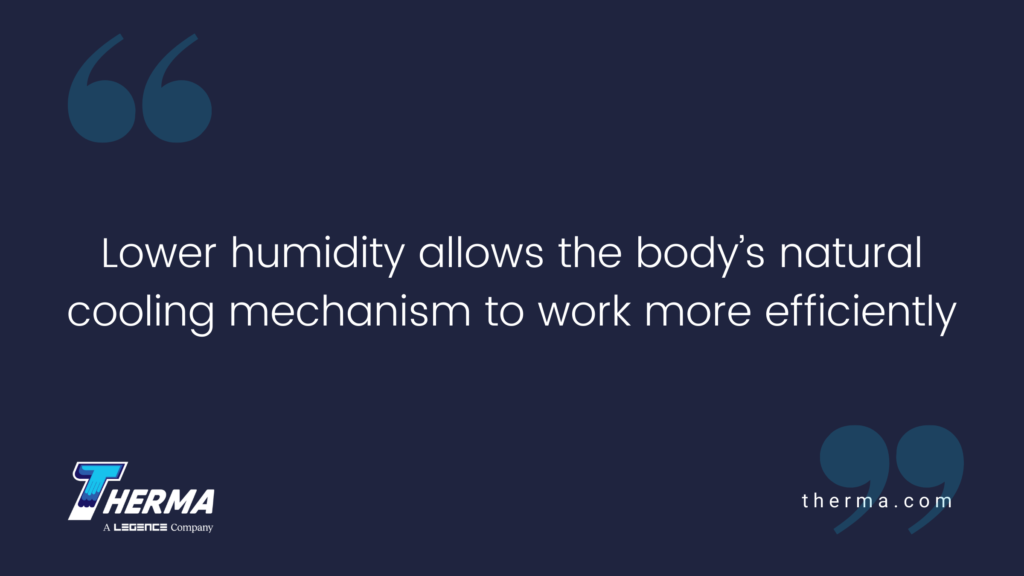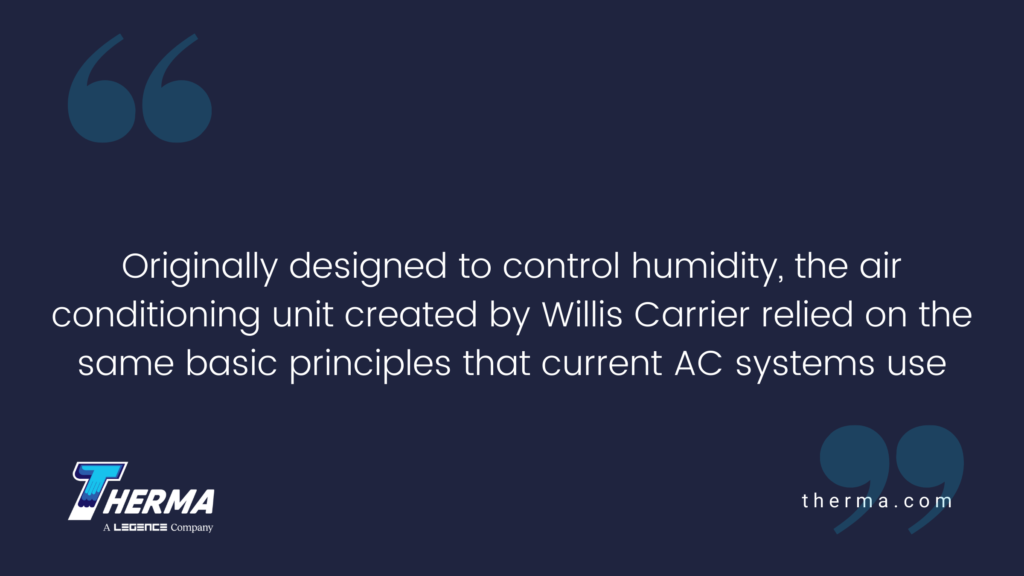by Patti Dees
How does an air conditioner work? AC is an often-underestimated technology, but it revolutionized the industry and has expanded comfort around the world since the 1900s. Originally designed to control humidity, the air conditioning unit created by Willis Carrier relied on the same basic principles that current AC systems use.
How Does an Air Conditioner Work? Basic Principles
If you read our guide, How Does a Furnace Actually Work? Here’s What You Should Know, you may be wondering about the air conditioning side of things. AC and other types of cooling equipment, such as refrigerators, rely on thermodynamic concepts, heat transfer and phase changes. Here’s how it works:
- Heat flows towards colder areas or objects. This is part of the second law of thermodynamics.
- Conduction, convection and radiation transfer heat between objects that are touching each other, within a fluid like air or water.
- Phase changes happen when a significant amount of heat or pressure is transferred to or from a material or fluid. For instance, adding enough heat to liquid water will cause it to vaporize into a gas, i.e., steam. However, increasing pressure creates a situation where more heat is needed to cause the same phase change.
- Temperature, pressure and volume are interconnected. Changes in one will cause changes in the other two, such as the phase change example in the example above.
- The dew point is the temperature at which air becomes saturated with water molecules. As the temperature drops below the dew point, the molecules of water draw together to form large enough quantities to separate from the surrounding air, forming condensation.
- Lower humidity allows the body’s natural cooling mechanism to work more efficiently.
The major components for AC combine these fundamental concepts to control both temperature and humidity within buildings.
A Walk-Through of Major Components
There are two loops that control the heat transfer in AC systems, one for the refrigerant and an intersecting loop for the building air. The refrigerant flows through four major components, two of which are heat exchangers: the evaporator coils, compressor, condenser and expansion valve. Ventilation moves air through the building space, removes heat from the building and draws in the fresh air. The heat transfer between the refrigerant and air takes place at the evaporator coils.
When the thermostat triggers the system to run, warm air is drawn from the room as cooler air enters it. The warm air passes over the evaporator coils. Heat from the air is transferred to the coil and then to the refrigerant within, leaving the air cooler than it was. If the air is humid and it reaches the dew point temperature, condensation will form on the surface of the evaporator coils. The cooled and dehumidified air is ready to return to the air-conditioned space, and the condensation drains outside or is sent through the building’s plumbing.
Evaporator coils
Within the evaporator coils, the refrigerant enters as a cold low-pressure mist. As the heat transferred from the warm air passing over the coils raises the temperature of the refrigerant, it turns into a warm vapor.
Compressor
The warm vapor from the evaporator coils enters the compressor. The compressor reduces the volume of the vapor, turning it into a high-temperature, high-pressure vapor. The compressor is also responsible for moving the refrigerant through the connected equipment.
Condenser Coil
The vapor from the compressor makes its way into the condenser coil. The condenser coil has fins and a fan to move air across them. Heat is transferred from the coil to the fins and then to the air as it passes over. The air is then exhausted outside or sent to another part of the building where it can be reused. The refrigerant, now cooler, changes from a gas to a high-temperature liquid.
Expansion Valve
The liquid from the condenser coil passes through an expansion valve. As it is forced through, it disperses as a mist and loses a lot of heat due to the pressure drop. The cold mist flows into the evaporator coils to start the loop again.
Different types of AC units use this thermodynamic process, even if the list of connected equipment and their exact location varies.
Work With AC Professionals
As amazing as AC is, it can be an inefficient and costly process. Professional design and preventive maintenance plans are necessary for maximum efficiency and the longevity of the equipment. Reach out to the team at Therma where they use their knowledge and experience to optimize AC systems.
Patti draws on her background as a chemical engineer to share information with readers on technology,
manufacturing, and construction.
Sources
U.S. Department of Energy (DOE) – History of Air Conditioning
Arch Toolbox – How Air Conditioners Work
Arch Toolbox – Basics of Building Heating and Cooling









